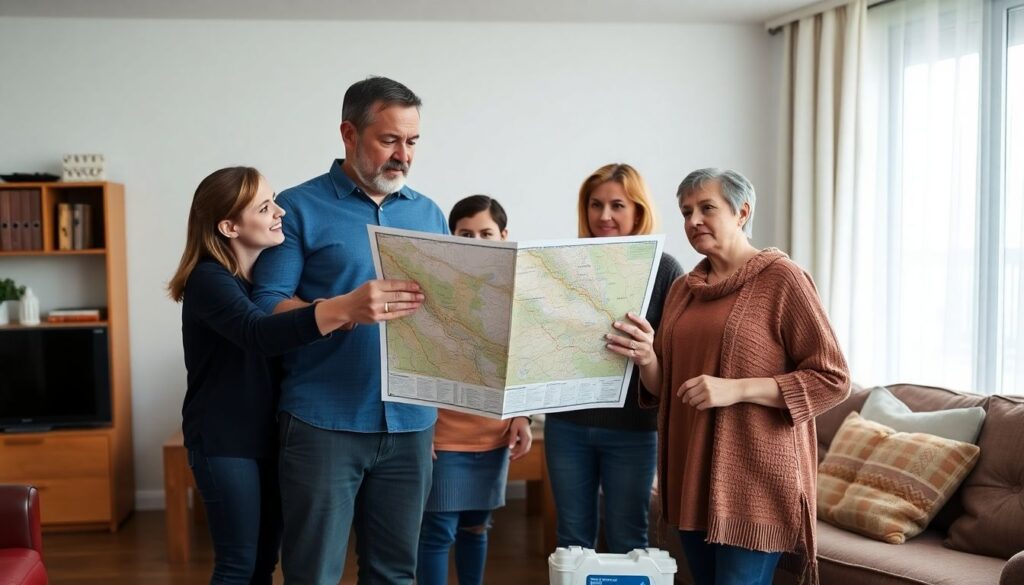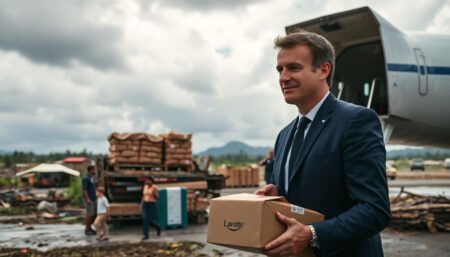In the face of escalating civil unrest and the increasing unpredictability of our world, the question on every responsible family’s mind is: ‘Are we prepared if chaos comes knocking at our door?’ According to a survey by the Red Cross, only 37% of American households have developed an emergency plan, and a mere 14% have discussed two or more ways to evacuate their home. This alarming lack of preparedness underscores the urgent need for families to develop a comprehensive emergency plan, especially when it comes to civil disorder scenarios. This article, ‘Developing a Family Emergency Plan for Civil Disorder’, is designed to equip you with the knowledge and tools to create a robust family preparedness strategy, ensuring that you and your loved ones are ready to navigate any storm that may come your way. **Agree:** We understand that the thought of civil disorder can be daunting, and it’s easy to push the idea to the back of our minds. However, as history has shown us time and time again, from the 2020 protests to the 2011 riots in the UK, civil unrest can happen anywhere, at any time. It’s our responsibility as parents and family members to be prepared, not just for our sake, but for the sake of our loved ones. **Promise:** By the end of this article, you will have a clear understanding of the importance of family preparedness in the context of civil disorder. We will delve into the critical aspects of developing an effective emergency plan, including communication strategies to keep your family connected and safe, and evacuation planning to ensure a swift and orderly exit from your home or neighborhood. We will also provide practical tips and real-life examples to help you tailor your plan to your family’s unique needs and circumstances. **Preview:** We will begin by discussing the importance of family preparedness and the role it plays in mitigating the risks associated with civil disorder. We will then move on to communication strategies, exploring the best ways to stay connected with your family during a crisis. Next, we will delve into evacuation planning, providing step-by-step guidance on how to create an evacuation plan that works for your family. Finally, we will discuss the importance of regular drills and updates to ensure that your plan remains relevant and effective. So, let’s roll up our sleeves and dive into the world of family preparedness. Let’s ensure that our families are not just ready, but resilient, in the face of civil disorder.
Ensuring Family Safety During Civil Unrest: A Comprehensive Guide
In the face of civil unrest, ensuring the safety of your family becomes a paramount concern. This comprehensive guide aims to equip you with essential knowledge and practical steps to navigate such challenging times. Firstly, stay informed through reliable news sources to understand the situation’s dynamics and potential threats. Next, establish a family communication plan, ensuring everyone has access to a charged phone, emergency contact numbers, and a safe meeting point. Regularly update your family’s emergency supply kit, including non-perishable food, water, medications, and important documents. Consider learning self-defense techniques and teaching them to your family members. Moreover, familiarize yourself with your community’s emergency response plans and evacuation routes. Lastly, maintain a calm and reassuring demeanor, as children often mirror their parents’ emotions. By following these steps, you can significantly enhance your family’s safety and resilience during civil unrest.
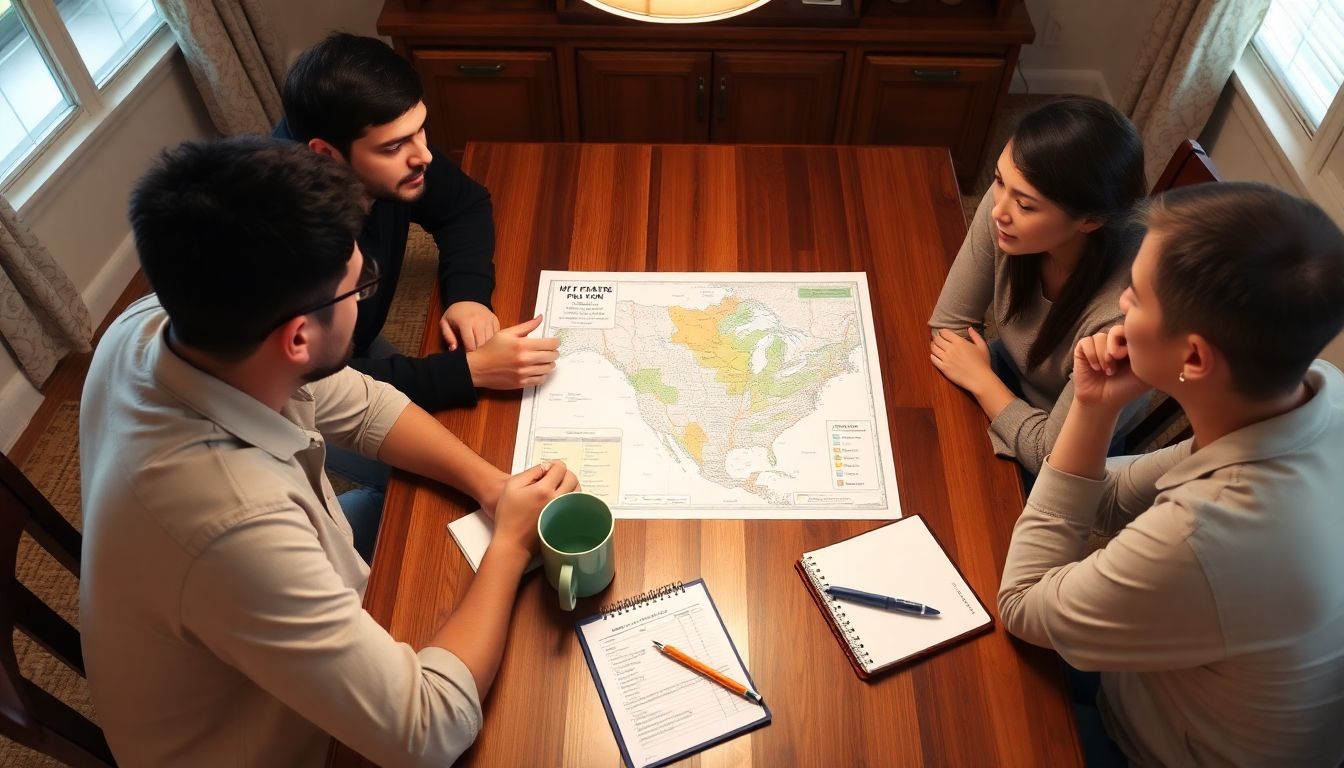
Understanding the Need for a Family Emergency Plan
In the face of civil disorder scenarios, such as natural disasters, power outages, or social unrest, having a well-thought-out family emergency plan is not just beneficial, but absolutely crucial. These situations can be chaotic and unpredictable, making it essential for families to have a clear roadmap for staying safe, communicating effectively, and making informed decisions. A family emergency plan serves as a comprehensive guide, ensuring that everyone knows what to do, where to go, and how to stay connected during a crisis. It begins with identifying potential hazards in your area and discussing them openly with your family. This awareness helps everyone understand the risks and fosters a sense of preparedness. The plan should include evacuation routes and safe meeting points, both locally and out-of-town, in case of a sudden evacuation. It’s also vital to establish an out-of-town contact, someone who can act as a point of contact for family members to call if they’re separated during an emergency. This person should live far enough away from the immediate danger zone to avoid the same issues. Additionally, the plan should outline how to communicate during an emergency. This could involve using text messages, social media, or specific emergency alert systems, as phone lines may be busy or unavailable. Having a family emergency plan also ensures that everyone knows where to find important documents, such as insurance policies, identification cards, and birth certificates, which can be crucial for recovery efforts. Moreover, it’s important to include plans for pets, as they are often overlooked in emergency situations. Regularly reviewing and updating the plan ensures that everyone is familiar with the procedures and that the information is current. Lastly, practicing the plan through drills or games can help reduce fear and anxiety, and increase the likelihood that everyone will remember what to do when a real emergency occurs. In essence, a family emergency plan is not just a piece of paper, but a lifeline that can help families navigate through civil disorder scenarios safely and effectively.

Assessing Your Family’s Unique Needs and Risks
Assessing your family’s unique needs and risks is a crucial first step in creating an effective emergency plan. Begin by considering the ages of your family members. Infants and young children require constant care and supervision, while elderly family members may have specific medical needs or mobility challenges. Next, evaluate each family member’s health conditions. Individuals with chronic illnesses, disabilities, or special needs may require additional support or equipment during an emergency. Additionally, consider specific vulnerabilities such as allergies, mental health conditions, or dependence on medical devices. By understanding these unique needs and risks, you can tailor your emergency plan to ensure everyone’s safety and well-being. For instance, you might need to establish a support network for childcare or eldercare, stock up on specific medications, or plan for evacuation methods that accommodate mobility challenges. Regularly reviewing and updating this assessment will help ensure that your emergency plan remains relevant and effective, providing peace of mind and preparedness for your entire family.

Establishing a Family Communication Plan
In today’s interconnected world, maintaining open lines of communication is more crucial than ever, especially during challenging times such as civil disorder. Establishing a family communication plan ensures that everyone stays informed, connected, and safe. The first step is to create an emergency contact list, including all family members’ phone numbers, email addresses, and physical addresses. It’s also wise to have out-of-town contacts, individuals who live in a different area and can act as a point of contact if local communication networks are disrupted. These contacts can help coordinate efforts to reunite family members if separated.Technology plays a significant role in modern communication strategies. Text messages are often the most reliable form of communication during emergencies due to their low data usage. Designate a family group chat where everyone can quickly share updates and important information. Social media platforms can also be useful, with family members following each other’s accounts to stay updated on their status and whereabouts. However, it’s crucial to remind everyone to prioritize safety and not to share sensitive information that could compromise security.Emergency alert systems, such as those provided by local governments or community organizations, should also be utilized. These systems send out critical information and instructions during emergencies. Ensure that all family members are registered to receive these alerts. Additionally, consider using emergency communication apps designed for such situations, which can provide real-time updates and allow family members to check in with each other.Lastly, it’s essential to discuss and agree on a family meeting point and an out-of-town meeting point in case of evacuation or separation. Regularly review and update the communication plan to ensure its effectiveness. By implementing these strategies, families can enhance their resilience and stay connected during civil disorder or any other emergency situation.
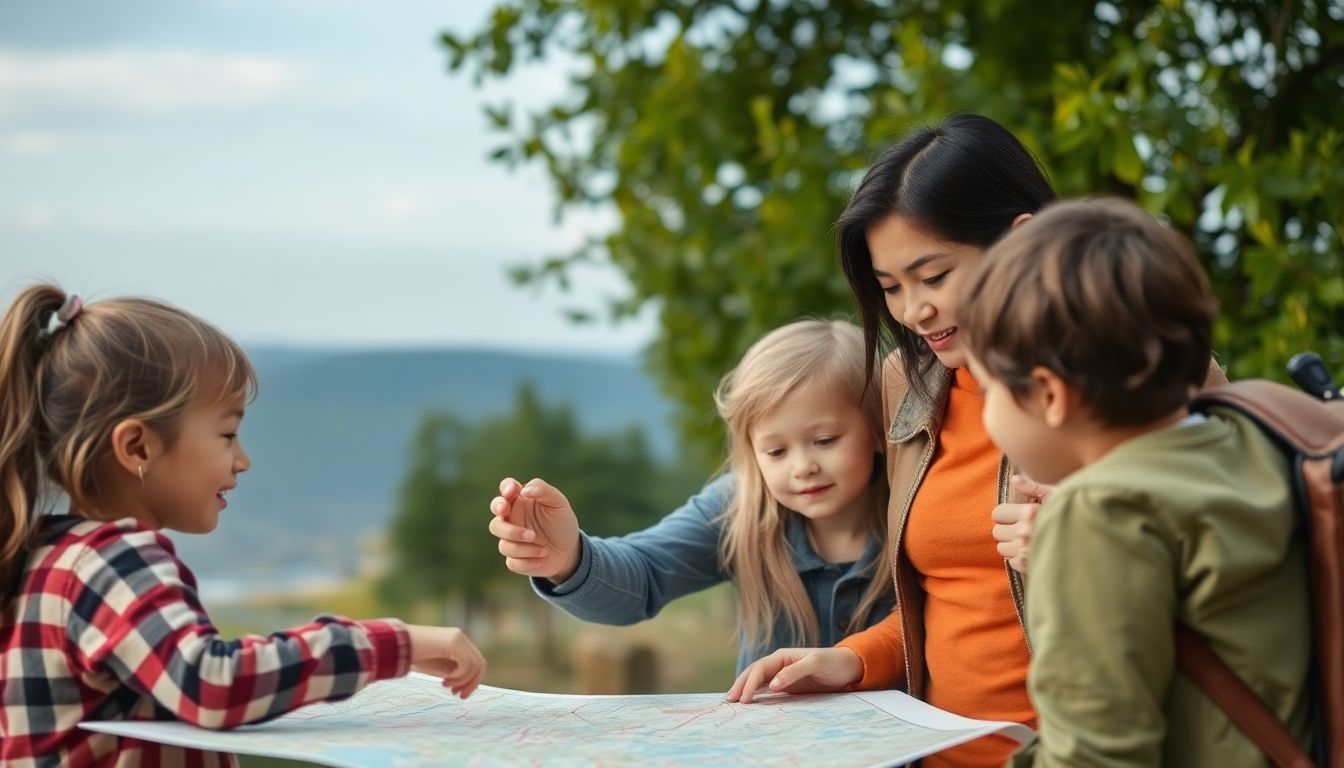
Choosing Safe Meeting Points and Evacuation Routes
Designating safe meeting points and evacuation routes is a crucial aspect of emergency preparedness that often goes overlooked. These designated locations serve as lifelines, enabling families and communities to reunite, assess damages, and coordinate responses during and after disasters. By having a predetermined plan, you can minimize confusion, panic, and potential hazards, ensuring the safety and well-being of all involved.When choosing safe meeting points, consider locations that are easily accessible, well-known to all family members, and situated away from potential hazards. For instance, if you’re staying at home, a meeting point could be a large, open space like the living room or a designated safe room. If evacuating to a friend’s house, choose a spot that’s visible from the street and far enough from your home to avoid potential hazards. In case of evacuation to an emergency shelter, familiarize yourself with the layout beforehand and choose a meeting point near the entrance or a visible landmark.Discussing different scenarios is equally important. For instance, if you’re staying at home, ensure everyone knows the meeting point and has a backup plan in case they can’t reach it. If evacuating to a friend’s house, make sure they’re aware of your plans and willing to accommodate you. For emergency shelters, know their locations, hours of operation, and any specific instructions for registration and entry.Regularly review and update your plans to account for changes in family dynamics, new hazards, or shifts in community resources. Practice evacuation drills to ensure everyone knows their role and can execute the plan efficiently. By investing time in these preparations, you’re investing in the safety and security of your loved ones, making the difference between chaos and order in the face of an emergency.

Building an Emergency Supply Kit
Building an emergency supply kit is a crucial step in preparing your family for civil disorder scenarios. The kit should be tailored to your family’s unique needs, taking into account any special medical requirements, dietary restrictions, or pet needs. Here’s a detailed list of essential items to include:1. Water: Aim for one gallon per person per day. Store it in sealed containers and replace every six months.2. Food: Pack non-perishable, easy-to-prepare items that require minimal cooking. Include a manual can opener. Consider your family’s dietary needs, such as vegetarian, gluten-free, or infant-specific foods.3. First Aid Kit: Include bandages, antiseptic wipes, tweezers, medical tape, latex gloves, and any prescription medications your family needs.4. Lighting and Communication: Pack flashlights, extra batteries, a portable radio, and a whistle. A solar or hand-crank charger for your phone can also be invaluable.5. Warmth: Include blankets, warm clothing, and rain gear. Consider portable heat sources like hand warmers or a small camping stove with fuel.6. Hygiene and Sanitation: Pack toilet paper, wet wipes, soap, a small bucket with a lid, and bleach tablets for water purification.7. Important Documents: Gather copies of important documents like IDs, insurance policies, birth certificates, and bank account records. Store them in a waterproof container.8. Cash: Have some cash on hand, as ATMs and credit card machines may not be operational.9. Special Items: Include items specific to your family’s needs, such as baby formula, pet food, or medical equipment.The importance of having multiple kits in various locations cannot be overstated. Keep one at home, one in your car, and consider having a portable ‘go-bag’ for each family member. This way, you’re prepared whether you’re at home, at work, or on the go. Regularly review and update your kits to ensure everything is in working order and replace any expired items. Being prepared can greatly reduce stress and anxiety during civil disorder scenarios, allowing you to focus on keeping your family safe.

Planning for Pets and Other Dependents
In the event of an emergency, our pets and other dependents are often the last things on our minds, but they should be among the first. Including them in our family emergency plan is not only crucial for their well-being but also for our peace of mind. Pets, especially, rely on us for their safety and care. A well-prepared emergency plan ensures that we can act swiftly and calmly, reducing stress for both ourselves and our furry family members.Preparing a pet emergency kit is a vital first step. This kit should include essentials such as food, water, bowls, a leash, a collar with ID tags, a pet first aid kit, any necessary medications, and important documents like vaccination records. It’s also a good idea to include comfort items like a favorite toy or blanket to help keep your pet calm and reassured.Finding pet-friendly shelters is another important aspect of planning. Not all shelters allow pets, and those that do may have limited space. Researching pet-friendly options in your area ahead of time can save valuable time and stress during an emergency. It’s also a good idea to have a list of pet-friendly hotels and motels along your evacuation route, as well as the contact information for local animal shelters and veterinary clinics.Service animals, such as guide dogs or emotional support animals, play a vital role in the lives of many individuals. It’s crucial to include them in your emergency plan and ensure that they have access to any necessary resources. This may involve having a backup service animal, if possible, or making arrangements with a trusted friend or family member to care for your service animal if you are unable to do so.By taking the time to plan for our pets and other dependents, we can ensure that they are safe and cared for, even in the most challenging of circumstances. After all, they are part of our family, and their well-being is just as important as our own.
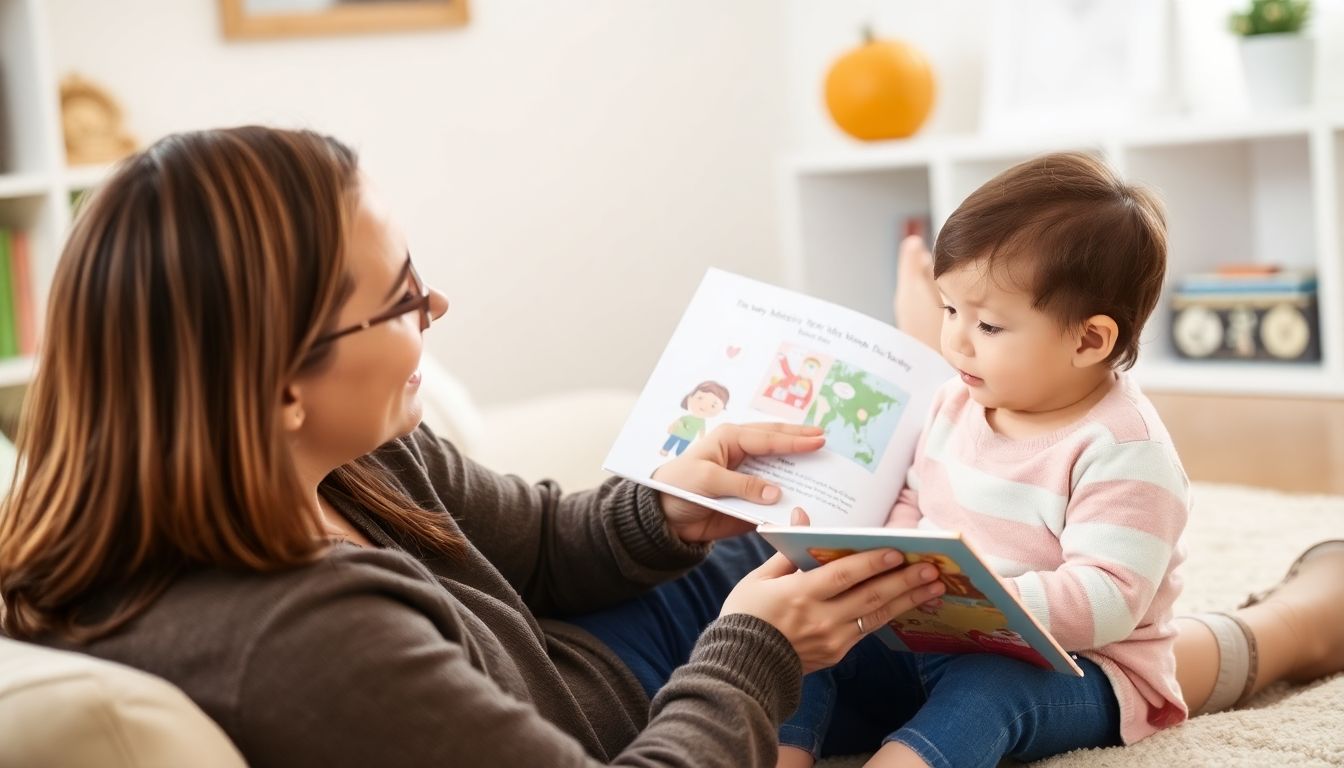
Teaching Children About Civil Disorder and Emergency Plans
Teaching children about civil disorder and emergency plans is a crucial aspect of their overall education and safety. It’s important to approach this topic in an age-appropriate manner, using simple, clear language that doesn’t frighten or confuse them. For younger children, you might explain civil disorder as ‘times when people have different opinions and might behave in ways that aren’t safe or kind.’ For older children, you can delve deeper into the concepts of protest, inequality, and the importance of peaceful resolution. Involving children in the planning process can make them feel empowered and responsible. You can start by creating a family emergency plan together. Discuss where you would meet if you were separated during an emergency, and who you would call. Make sure to include your children’s input and encourage them to ask questions. This not only helps them understand the importance of planning but also makes them active participants in their own safety. Teaching children how to call emergency services is an essential skill. Use role-playing to help them practice dialing the number, speaking clearly, and providing necessary information. Make sure they know their home address and phone number, as this can be crucial in an emergency. Also, teach them about the different types of emergencies and when to call each service (police, fire, ambulance). It’s also important to discuss what to do during civil disorder. Teach them to stay calm, stay indoors if possible, and follow the instructions of adults in charge. Explain that it’s okay to feel scared, but it’s important to listen and follow the rules to stay safe. Always reassure them that you’re there to protect and guide them. Lastly, use books, movies, and real-life examples to discuss these topics. This can help children understand complex concepts better and open up conversations about their feelings and thoughts. Always remember, the goal is to educate, empower, and reassure, not to frighten.

Practicing and Updating Your Family Emergency Plan
Regularly practicing and updating your family emergency plan is not just a good idea, it’s a crucial step in ensuring your family’s safety and preparedness. Life is unpredictable, and emergencies can happen at any time, from natural disasters like earthquakes or hurricanes to man-made crises such as fires or chemical spills. Having a well-rehearsed and up-to-date emergency plan can significantly reduce the stress and chaos that often accompany these events, helping to keep your family calm, informed, and safe.Conducting regular emergency drills is vital for several reasons. First, it helps family members, especially children, understand what to do when an emergency occurs. It’s one thing to talk about an emergency plan, but it’s another to actually practice the steps involved. Drills can help alleviate fears and build confidence, making it more likely that everyone will know what to do when a real emergency happens.When conducting drills, it’s important to make them as realistic as possible. This might involve turning off the lights to simulate a power outage, or using a timer to practice a quick evacuation. It’s also a good idea to vary the types of drills you conduct. For example, you might practice what to do during a fire one month, and then practice an earthquake drill the next.Reviewing and updating your emergency plan is also crucial. Families change over time, and what worked last year might not work this year. For instance, if you’ve had a new baby, you’ll need to update your plan to include their specific needs. If someone in your family has developed a medical condition, you’ll need to update your plan to include that as well. It’s a good idea to review your plan at least once a year, and update it as needed.Involving the whole family in the emergency planning process is also important. This not only helps ensure that everyone knows what the plan is, but it also gives everyone a sense of ownership and responsibility. When children are involved in the planning process, they’re more likely to understand and remember the plan. It can also be a good opportunity to discuss fears and concerns, and to provide reassurance and support.In conclusion, practicing and updating your family emergency plan is a vital part of keeping your family safe. Regular drills, thorough reviews, and family involvement can all help ensure that your plan is effective and up-to-date. So, don’t wait until an emergency happens to start thinking about your family’s safety. Start today by reviewing and updating your emergency plan, and conducting regular drills. Your family’s safety depends on it.
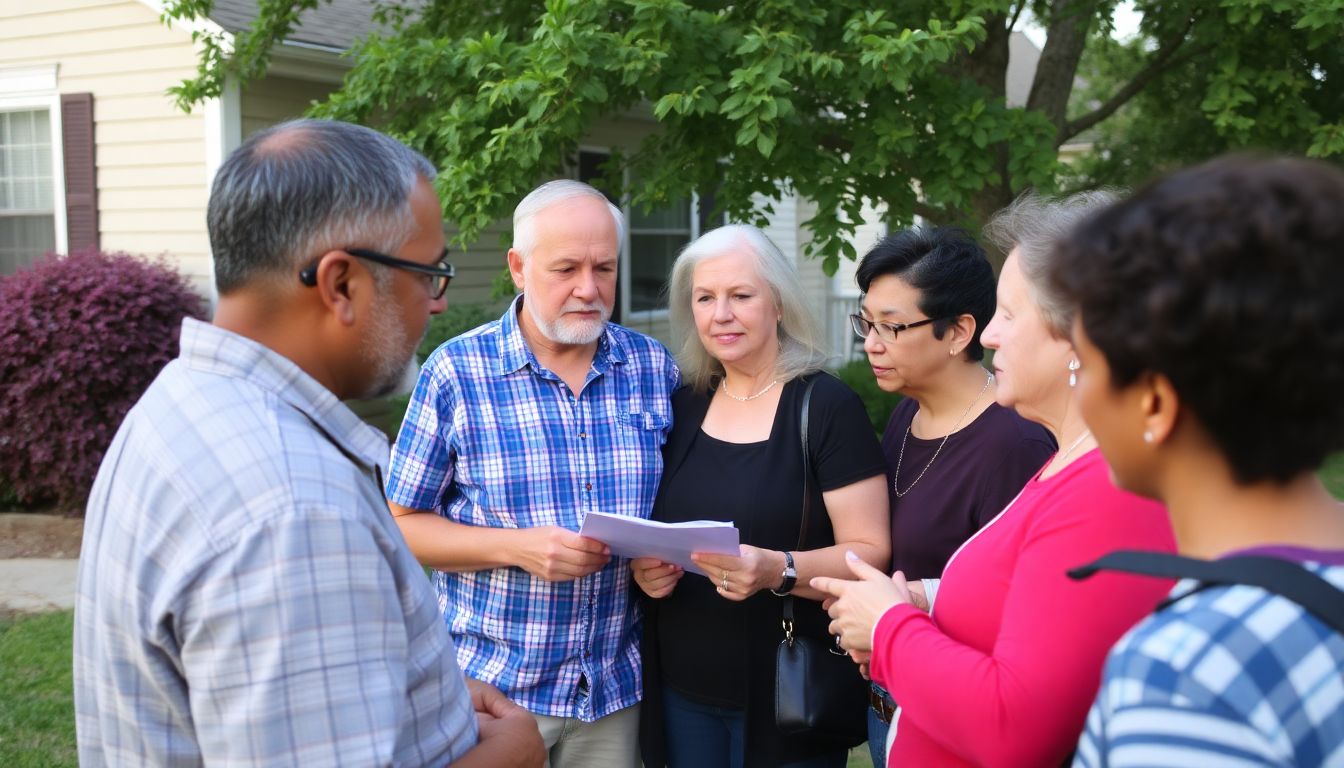
Connecting with Your Community and Local Resources
In the face of potential civil disorder events, fostering strong connections within your community can serve as a robust safety net, enhancing family preparedness and resilience. Engaging with neighbors, community groups, and local resources is not merely a suggestion, but a crucial strategy that can significantly bolster your family’s ability to navigate challenging times. By building a sense of community, you create a network of support that can provide practical assistance, emotional comfort, and shared knowledge during crises.Connecting with neighbors allows for the establishment of a watchful eye over each other’s homes and families. This mutual vigilance can help deter potential threats and ensure the safety of everyone involved. Moreover, neighbors can share resources, such as food, water, and medical supplies, reducing the burden on individual households. Community groups, like local churches, schools, or volunteer organizations, can offer additional support. They often have established networks and can provide guidance on emergency procedures, access to shelters, and other vital services.Local resources, including government agencies, non-profits, and businesses, play a pivotal role in community resilience. They can offer training in emergency response, first aid, and self-defense. Libraries, for instance, can be a wealth of information on emergency preparedness, while local businesses may provide job opportunities or discounted services during difficult times. Furthermore, connecting with these resources ensures that your family is well-informed about available assistance and can access it promptly when needed.In essence, connecting with your community and local resources is about cultivating a sense of interdependence and shared responsibility. It’s about recognizing that we are stronger together and that our collective efforts can mitigate the impact of civil disorder events. By investing time and effort into these connections, families can enhance their preparedness, foster a sense of security, and build a supportive network that will serve them well in times of crisis.
FAQ
What is a Family Emergency Plan and why is it important for civil disorder situations?
How do I start developing a Family Emergency Plan for civil disorder?
What are some key elements to include in our Family Emergency Plan?
How can we establish effective communication strategies during civil disorder?
- town contact person who can act as a central point of communication if family members are separated; 2) Choosing reliable communication methods like text messages, social media, or specific apps designed for emergencies; 3) Regularly updating contact information and practicing the plan; 4) Using code words to alert family members to potential danger without causing alarm.
What should our evacuation planning include for civil disorder situations?
How can we prepare our home for civil disorder situations?
What should we do if we need to shelter in place during civil disorder?
How can we prepare our children for civil disorder situations?
- appropriate discussions about civil disorder and the importance of the family emergency plan; 2) Role
- playing different scenarios to help them understand what to do; 3) Teaching them how to call emergency services and provide important information; 4) Establishing a safe word or code to use if they need to leave with a stranger; 5) Ensuring they know how to reach you or other trusted adults if separated.



